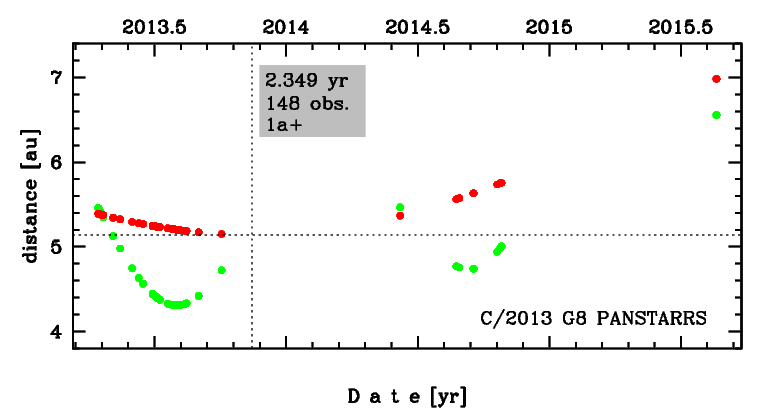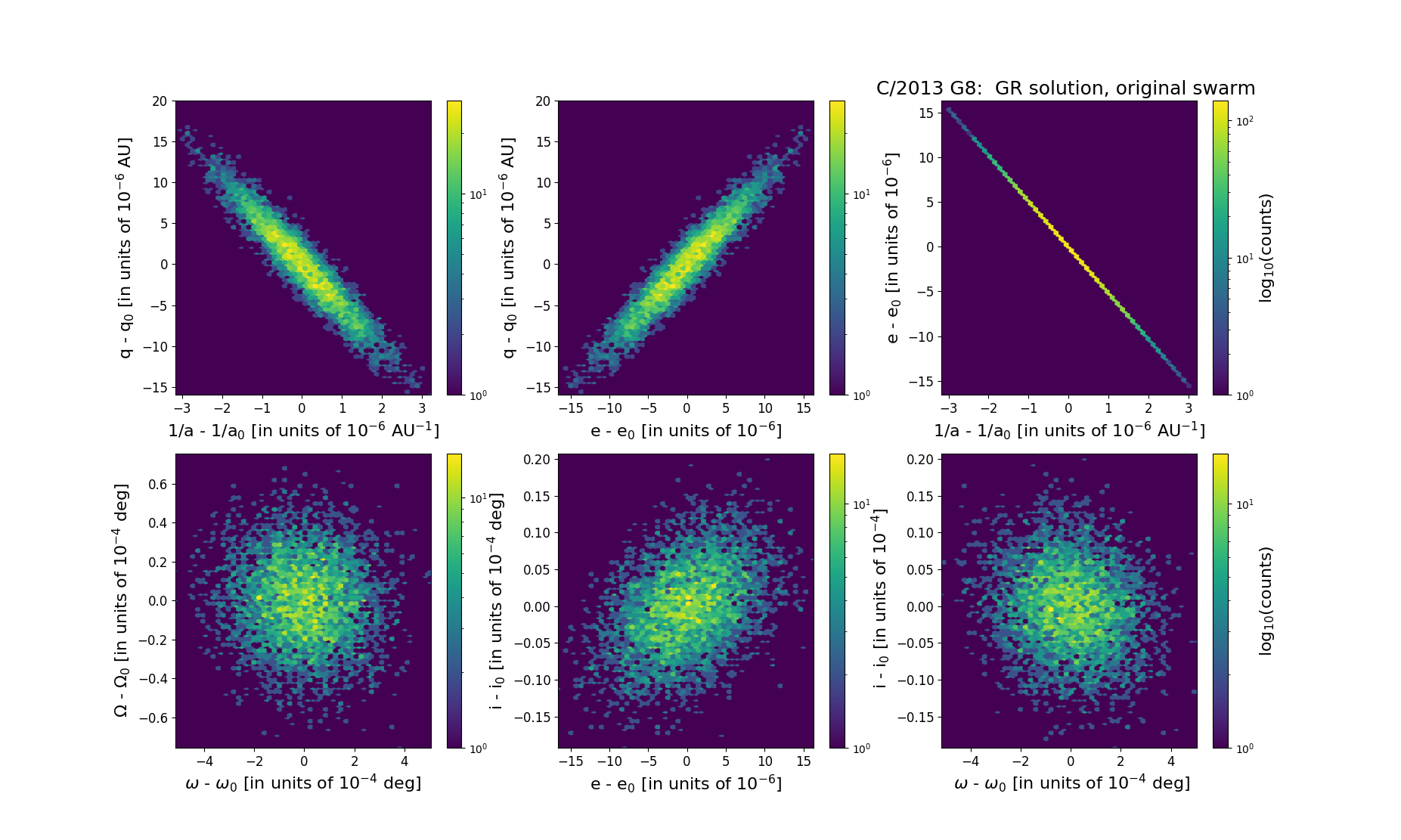C/2013 G8 PANSTARRS
more info
Comet C/2013 G8 was discovered on 14 April 2013 with Pan-STARRS 1 telescope (Haleakala), that is 7 months before its perihelion passage. It was observed until 20 August 2015.
Comet had its closest approach to the Earth on 1 August 2013 (4.318 au), about 3.5 months after discovery and 3.5 months before perihelion passage.
Solution given here is based on data spanning over 2.35 yr in a range of heliocentric distances: 5.39 au – 5.141 au (perihelion) – 6.98 au.
This Oort spike comet suffers moderate planetary perturbations during its passage through the planetary system; these perturbations lead to a more tight future orbit (see future barycentric orbits).
Comet had its closest approach to the Earth on 1 August 2013 (4.318 au), about 3.5 months after discovery and 3.5 months before perihelion passage.
Solution given here is based on data spanning over 2.35 yr in a range of heliocentric distances: 5.39 au – 5.141 au (perihelion) – 6.98 au.
This Oort spike comet suffers moderate planetary perturbations during its passage through the planetary system; these perturbations lead to a more tight future orbit (see future barycentric orbits).
| solution description | ||
|---|---|---|
| number of observations | 148 | |
| data interval | 2013 04 14 – 2015 08 20 | |
| data type | perihelion within the observation arc (FULL) | |
| data arc selection | entire data set (STD) | |
| range of heliocentric distances | 5.39 au – 5.14 au (perihelion) – 6.98 au | |
| detectability of NG effects in the comet's motion | NG effects not determinable | |
| type of model of motion | GR - gravitational orbit | |
| data weighting | YES | |
| number of residuals | 284 | |
| RMS [arcseconds] | 0.21 | |
| orbit quality class | 1a+ | |
| orbital elements (barycentric ecliptic J2000) | ||
|---|---|---|
| Epoch | 1707 12 19 | |
| perihelion date | 2013 11 14.46707854 | ± 0.00136832 |
| perihelion distance [au] | 5.14471765 | ± 0.00000525 |
| eccentricity | 0.99978566 | ± 0.00000506 |
| argument of perihelion [°] | 80.121267 | ± 0.000151 |
| ascending node [°] | 241.012147 | ± 0.000021 |
| inclination [°] | 27.58765 | ± 0.000006 |
| reciprocal semi-major axis [10-6 au-1] | 41.66 | ± 0.98 |
| file containing 5001 VCs swarm |
|---|
| 2013g8a5.bmi |

